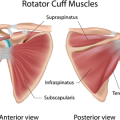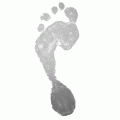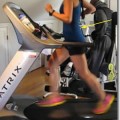Throw out your desk chair? Well, completely ditching it may be a bit extreme. But it might be time to give it up at least on a part-time basis. Here’s why. Chairs are making our lives miserable and sitting too much is literally killing us.
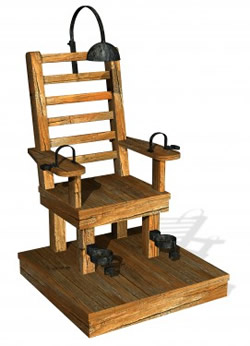
If sitting were considered a sport, we would be overtraining big time. Most would consider training for eight hours or more per day five days a week as overdoing it. Running for eight hours a day five days a week? How about swimming that amount? But many of us don’t think twice about sitting for up to eight hours or more per day in front of a computer at a desk. Not to mention the hours we log sitting in a car, on a couch in front of a TV, etc.
And all this sitting is unhealthy. Research suggests that extended sitting is associated with increased risk of chronic health and metabolic problems, including cardiovascular disease and type 2 diabetes (Katzmarzyk et al. 2009; Owen et al. 2009).
And if you think you can counterbalance excessive sitting by going out and training for 30 minutes, an hour, two hours or even three or four hours, consider this. Even if you worked out for three hours a day versus sitting at your desk for six hours, sitting would beat working out by a two to one margin. And “epidemiologic evidence suggests that sitting time has deleterious cardiovascular and metabolic effects that are independent of whether adults meet physical activity guidelines” (Hamilton et al. 2008).
I know. Most athletes don’t readily qualify as “sedentary” individuals and may possess more immunity than most in our sedentary society to the worst of these health problems. Yet even setting aside the research cited above, sitting too much can negatively impact athletes in another way—namely, by giving athletic overuse injuries a head start through poor postural habits.
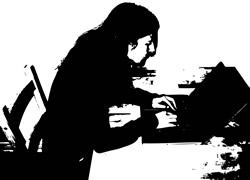
As the twig bends so grows the tree. The typical slouched position at a desk in front of a computer often involves protracted neck, internally rotated shoulders and little engagement from core muscles. And these habits of posture—along with accompanying muscle tightness and weakness—are often carried over into other daily activities, including our athletic endeavors.
Shoulder problems while swimming? Chances are that too much sitting while working on a computer has provided a nice head start for those swimming injuries by placing your shoulders in a chronically internally rotated position.
Piriformis, glute, hamstring or IT band problems while running or cycling? Chances are your sitting has given you a case of “sleepy glutes.” Key supporting muscles may be weak or fail to fire properly while running or cycling. Again, too much sitting can provide those athletic injuries with a nice head start.
So what can be done?
Functional strength exercises are one important step to take to counteract muscular imbalances caused by too much sitting. However, all those hours of sitting cannot simply be undone by a limited amount of strength training. It is also crucial that we incorporate positive postural habits into all our daily activities, including—of course—sitting.
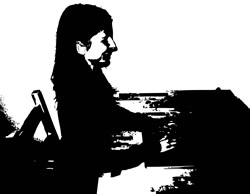
When you are sitting, be sure to sit with good posture. Back straight. Shoulder blades pulled back and down. Head retracted with ears in line with the shoulders (rather than head protracted forward). And if you must sit for prolonged periods of time, be sure to get up and walk around frequently (every half hour or so). The point is to break up the long sitting sessions with some movement that gets the blood flowing and muscles working while reinforcing good posture.
When sitting at a desk, consider using a balance ball (cheaper than an office chair anyway) part of the time instead of a typical desk chair. A balance ball will force you to engage your core muscles (abdominals, back, hips, glutes) while you sit, allowing you to be more active and burn more calories. Be sure to sit with a straight back and good posture, a habit that should then be carried over to sitting in a normal chair when you do that.
If possible, consider using a stand up desk arrangement—at least part of the time—to break up long periods of sitting while at work. Stand on one leg at a time while keeping your hips level, shifting back and forth between each leg. Think of this as a “bonus” or “secret” training session of single leg balance drills.
And if you watch TV at night, perform some core functional strength or flexibility work during commercial breaks. Not only does this eliminate some sitting time, but it will also give you an opportunity to counteract those weak areas caused by excessive sitting. Try, for example, some side planks, side leg raises, side planks with leg raises, or single leg glute bridges. Even 10 minutes a day can be beneficial. Start with an introductory routine and gradually work towards an advanced routine. You can even throw in some of these exercises during breaks from sitting throughout the work day.
Whether or not you actually ditch the desk chair, becoming more aware of your sitting habits will allow you to find ways to mitigate the deleterious effects that excessive sitting can have on your health and athletic performance. Keep in mind that sitting, like most things in life, is best done in moderation.
Further Reading
American College of Sport Medicine. 2011, August 1. “The Science of Sedentary Behavior: Too Much Sitting and Too Little Exercise.” ACSM in the News.
American College of Sport Medicine. 2011, August 1. “Expert Underscores Health Risks of Sitting Still.” ACSM in the News.
Hamilton, Marc T.; Healy, Genevieve N.; Dunstan, David W.; Zderic, Theodore W.; and Owen, Neville. 2008. “Too Little Exercise and Too much Sitting: Inactivity Physiology and the Need for New Recommendations on Sedentary Behavior.” Current Cardiovascular Risk Reports 2(4): 292-298.
Katzmarzyk, Peter T.; Church, Timothy S.; Craig, Cora L.; and Bouchard, Claude. 2009. “Sitting Time and Mortality from All Causes, Cardiovascular Disease, and Cancer.” Medicine & Science in Sports & Exercise 41(5): 998-1005.
Owen, N., Bauman, A. and Brown, W. 2009. “Too Much Sitting: A Novel and Important Predictor of Chronic Disease Risk?” British Journal of Sports Medicine 43(2): 81-83.
Roy, Brad A. 2012. “Sit Less and Stand and Move More.” ACSM’s Health and Fitness Journal 16(2): 4.

